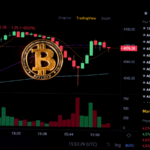Stock models are visual representations of stock prices. They are used by traders as a predictive technical analysis tool. In other words, each model represents familiar market conditions and can be used to predict how a stock will move.
Table of Contents:
ACTION TEMPLATES
When trading stocks, it is important to know how to read stock patterns. The patterns we will describe below are some of the most common seen by traders when evaluating a stock chart.
Patterns can form with a candlestick or a series of candles and can be seen in any time frame, from an intraday chart to weekly and monthly charts. Below are some examples of stock models used by traders:
- Ascending triangle
- Symmetrical triangle
- Descending triangle
- Cup and handle
- Double bottom
- Double floor
- up/head and shoulders down
Head and shoulders
TRADING MODELS
Patterns are recognized through implicit learning. Over time, you will pick up on these patterns just like all traders who have gone before you.
Trading patterns come in many different forms and forms, but they are all simply historical analogues of stock price movements. It is your job to try to predict its future movement. Chart templates can include things like flag patterns, trend lines, and triangles.
That said, the models are not perfect and nothing trading is guaranteed. However, there is a lot of money to be made when you have an idea of how a stock will move before it actually moves in that direction.
FLAG MODELS
Flags are usually thought of as bullish continuation patterns. Flags form when a stock moves strongly upwards and then consolidates into a narrow trading range.
The flag pattern is created by two parallel trend lines that skew relative to the previous trend. The two lines should act as support and resistance as the stock consolidates.
In general, there should be at least five candles between the breakouts of the trend line. Flag patterns usually occur in front of trend lines, in a sense: a break in a flag pattern signals the end of a corrective move and the trend resumption.
MODEL OF FALLING WEDGE
The fall wedge pattern is a bullish reversal chart pattern that can be seen in any time frame of the chart. The model consists of three price points, with the first highest price point and the third lowest price point of the three price points.
Wedges can both go up and down. However, the falling wedge pattern is typically considered bullish as we would expect the price to break on the upside of the model.
HOW TO READ STOCK MODELS
Stock models can be short-term or long-term, and if applied correctly, they can help you anticipate future price movements.
The movement of the stock price is not always random, which means that it can be predictable in many cases. The beauty of this fact is that by studying historical trends and patterns, technical analysts can predict what will happen next with some degree of accuracy. However, there are still some risks because the financial market is unpredictable.
In algorithmic trading, pattern recognition can be approached in two ways: through classification or through clustering.
- When using classification, the goal is to build a model that assigns a label to an input vector according to some algorithm.
- When approaching the rec model through clustering, the goal is to group similar objects into clusters based on some measure of similarity. Clustering allows outliers to be identified and clearly delineates where clusters begin and end.
For the discretionary trader, you can read stock models simply through implicit learning. The more you study the charts, the more you’ll begin to see the subtle nuances needed to make each model work. In this case, it is much more of a “feeling” than a systematic one.


